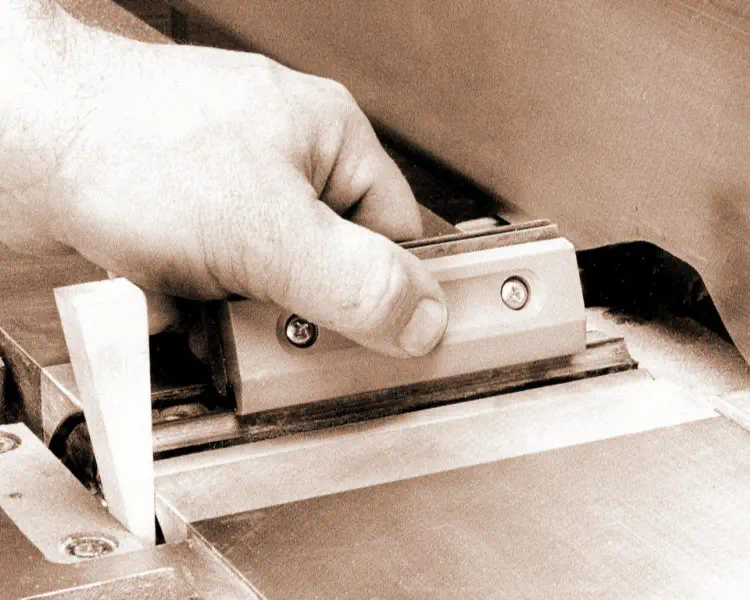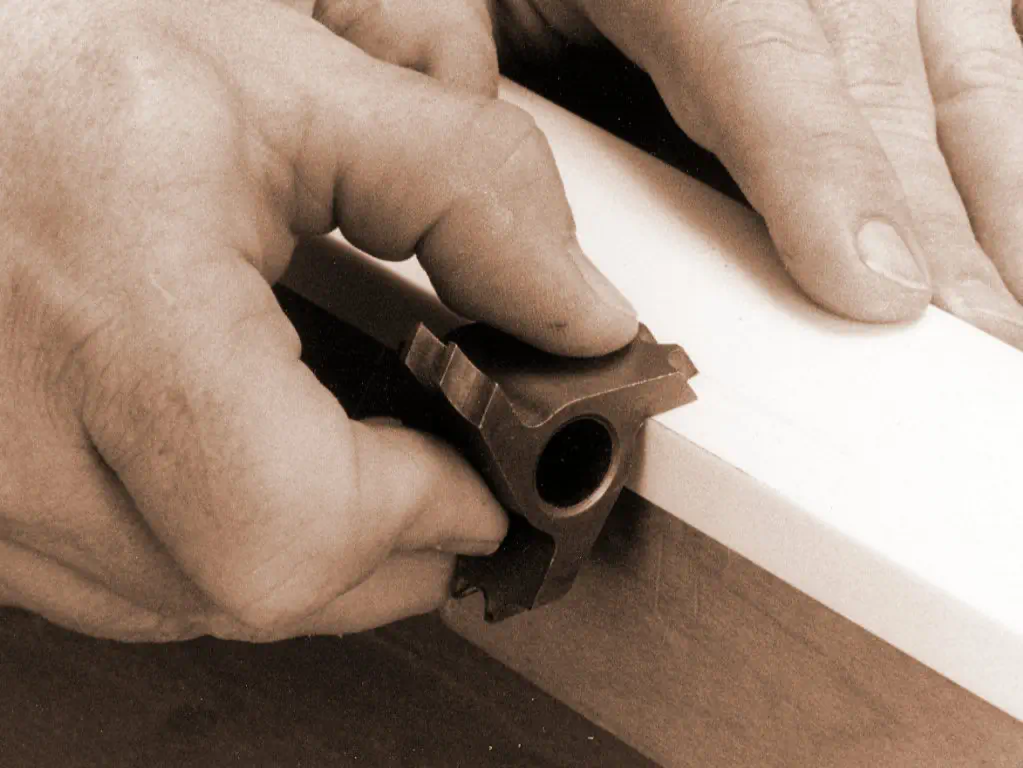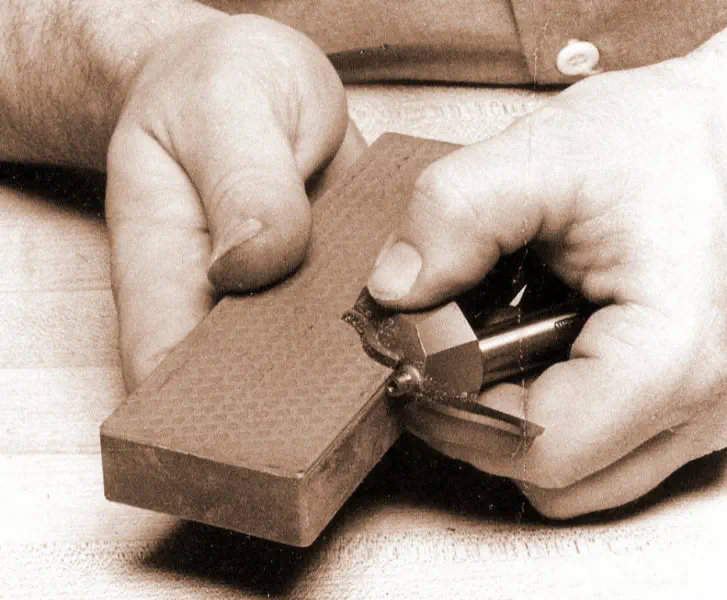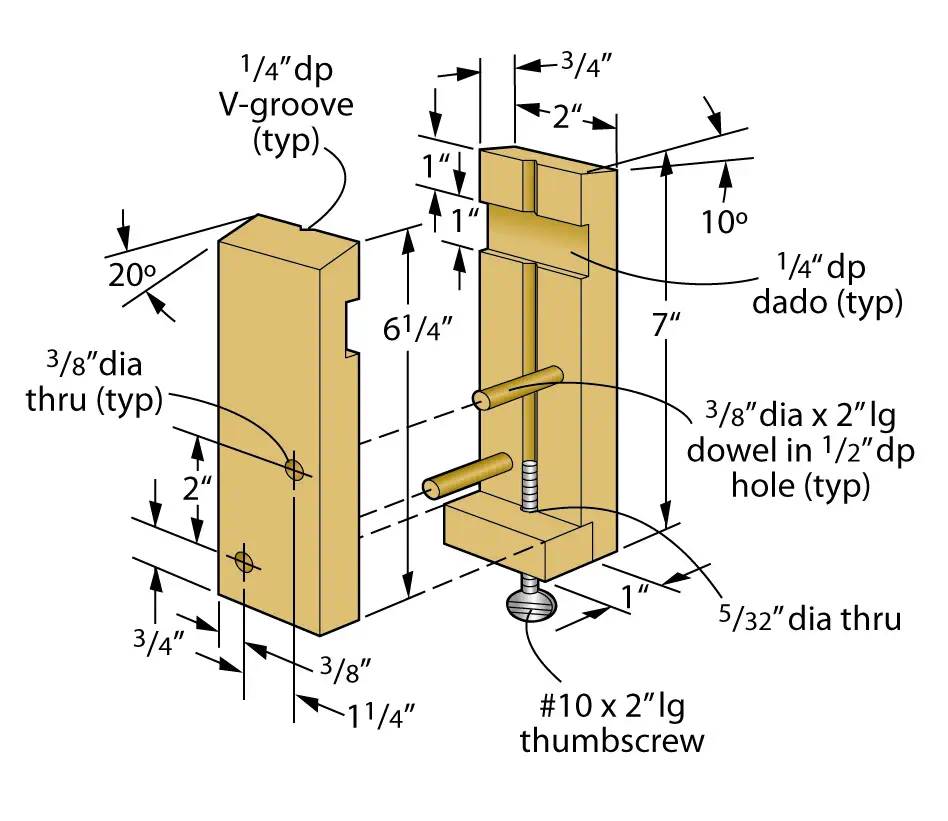JOINTER AND PLANER KNIVES
To touch up jointer and planer knives, first unplug the machine. Hone both the bevels and the backs of the knives with small slip stones, feeling for the correct angles. If you use oil or water to "float the swarf," be sure to carefully wipe the cutterhead clean and dry after honing. I make it a point to touch-up my planer knives before I begin each planing session, and my jointer knives every time I prepare wood for a major project. This way, they get a touch-up at least every few weeks. This greatly extends the time between sharpenings – I routinely get a year or more out of my planer knives and twice that from my jointer.
In addition to using slip stones, you can also purchase special touch-up hones (shown) made especially for jointer and planer knives. These greatly simplify the task of finding and holding the correct sharpening angle.






